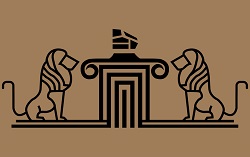An introduction to Armenian basalt
Basalt is an aphanitic (fine-grained) igneous rock, usually black in colour, formed by rapid cooling of molten lava. It is known as the earth’s most abundant bedrock, as most of the oceans’ crust is comprised of it. Around 90% of all volcanic rock on earth is basalt. The main components of basalt are three silicate minerals: plagioclase, olivine and pyroxene. Due to the high viscosity of Si minerals, after volcanic eruptions basalt in the form of lava tends to cover large areas before cooling down.
Mechanical properties and resistance
Basalt is a tenacious rock, with the evaluated hardness of 6 on the Mohs’ scale, which puts it in a strong-to-very strong category. Empirically proven, the values of all three strength properties are impressive, compressive (100-300MPa), tensile (10-30MPa) and sheer (20-60MPa). As silica makes up for about 50% of basalt’s structure, it is quite dense material, at 2.6-3.0g per cube centimetre. Basalt products are incredibly hard-wearing and resistant. The resistance goes further than the pure flexural strength, as it offers unparalleled abrasion and chemical resistance. Hence the basalt tiles are often used for flooring of heavy industrial objects. Finely polished, these floors also feature a metallic sheen.
A wide variety of applications
Since Roman times, basalt has been used as a construction material, usually for building cobblestone roads. Nowadays, basalt is most commonly used in its crushed form, as it can serve many purposes. Road bases are often made of crushed basalt; it can be a concrete and asphalt pavement aggregate or filter aggregate for drainage fields. Stone wool – a renowned thermal insulation material – can be produced from heating and extrusion of basalt.
Armenian basalt as a dimensional stone
Being a winsome rock, basalt is often cut into sheets, slabs, or bricks, and then used for decoration purposes. Due to its hardness and resilience, but also low porosity, basalt makes a perfect, long-lasting paving material. The density of the rock makes it a great choice for not only walkways and patios, but also driveways, and stairs. It comes in a variety of finishes, shapes and sizes, each providing unique textures. While the most popular finish is flamed, it also can be chiselled, sandblasted, honed or polished. Contemporary architects like using basalt pavers due to its somewhat unusual appearance. The usual thickness of basalt pavers ranges from 1-1/2” up to 6”, depending on the surface it’s installed on.
Basalt tiles can also be used for both indoor and outdoor wall cladding. The benefits of cladding the walls with natural stones are additional strength and durability, but also the aesthetic appeal. The notable traits of basalt besides the aesthetics are extremely high insulating properties and fire resistance.
Regarding indoor decoration, basalt is commonly used in the form of floor or wall tiles, usually flamed or honed, measuring from 3/8” to 3/4” thick. The black or dark grey tiles create a mesmerizing visual effect in contrast to other natural materials, such as wood for example. Basalt can also be used for veneering but is also cut into thicker basalt slabs. These can be polished to a shiny black lustre or flamed – adding a beautiful texture to this natural stone. Basalt is dense, durable and long-lasting material for both outdoor and indoor projects.



